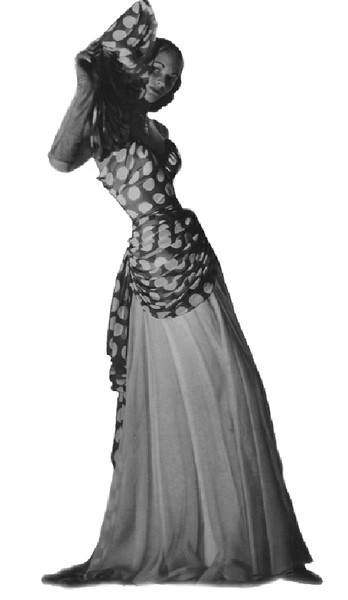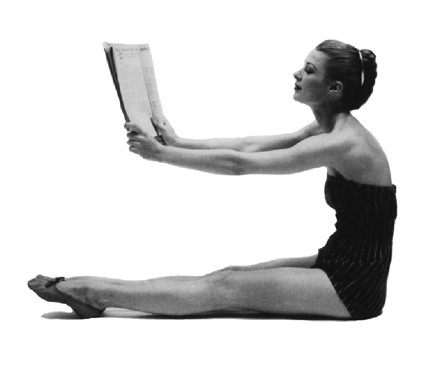It’s no wonder clothing designers and retailers get celebrities to play dress-up with their threads. While it’s arguable that clothes can stand alone as an art form, most gowns — heck, even T-shirts — look better with a little well-known je ne sais quois behind them; think actors parading down the red carpet at the Oscars, Sarah Jessica Parker shilling for the Gap, or even The O.C.’s Mischa Barton somewhat inexplicably appearing in the new Keds campaign.
Turns out the scions of fashion have known about the benefits of celebrity endorsement for a while. An explanatory blurb at the Kennedy Center’s exhibit Fabulous! Fashions of the 1940s even makes special note of the year, 1942, that Vogue fashion photographer John Rawlings began to replace the plain ol’ models in his pictures with the era’s headline-grabbing actresses and socialites — Marlene Dietrich and Loretta Young among them.
In the case of Fabulous!, a display of 31 women’s garments and 20-odd fashion photographs from the golden age of Hollywood that’s at the Kennedy Center’s Terrace Theater through April 14, the glamour and charisma so many of us automatically associate with the arts of the 1940s actually lacks a bit. There are glimmers of it, particularly in the pictures of Dietrich and Lauren Bacall and in a few of the more opulent gowns. But the individual pieces at this show don’t have the enthralling history to really make the exhibit captivating ; let’s face it, even the clothes Jackie Kennedy wore as first lady wouldn’t be that exciting or worthy of entire exhibits at the Metropolitan Museum of Art without her grace or star power behind them. However, Fabulous! finds more success in providing a historical perspective on fashion rather than on actually showcasing the most “fabulous” clothes of the era.
In fact, the most intriguing impression left by the display of the 60-year-old clothes may be that not much has changed. Sure, even during the 1940s — as noted by the exhibit’s curator Ellen Shanley, who is also curator of the Museum at the Fashion Institute of Technology in New York — designers changed their tune from the boxier shoulders of wartime to “The New Look,” which was a movement toward softer, more feminine shapes that was headlined by Christian Dior.
But of the clothing featured — which includes the more mainstream designs of the time — the majority doesn’t seem foreign to the modern eye. British designer Hardy Amies’ 1948 iridescent lavender silk shantung evening dress, with its one-shouldered support, three-dimensional silk roses attached to its bustle, and tons of material sure to make lots of noise when its wearer moves, might remind today’s InStyle reader of the Valentino gown Cate Blanchett wore to last month’s Oscars — that dress, of course, was designed for her this year. And Thaina-Norell’s 1949 shimmering coral silk organza evening dress, complete with a matching belt to separate its demure sleeveless top from the calf-length, full skirt below, is similar to dresses often donned by none other than that sophisticated lady Parker.
Of course, a few pieces are clearly relics of a different time, like the wool jersey bathing suits that probably didn’t do much to help the battle against tanlines. One other item, a three-piece khaki wool gabardine pantsuit, seems particularly dated as well, but that’s mainly thanks to the grand dame of Hollywood who most famously wore the pants when it was just becoming acceptable for women to do so: Katharine Hepburn. The mannequin it’s on — placed in front of the navy walls that form the exhibit’s subtle backdrop — is even sitting down in a pose that doesn’t seem far from one Hepburn herself may have struck.
And that’s one way the regal Hepburn and Dietrich find themselves connected to television fashionistas Parker and Barton. Each of the actresses — and, let’s face it, any regular schmoe — lends something special to whatever she’s wearing, which gives fashion-conscious and man-on-the-street audiences alike a chance to see the clothing come to life. Fabulous! features that sparkle as much as an exhibit of its small size will allow. In its focus on the clothes and their context, the exhibit also serves as an interesting insight into the world of fashion: When it comes to clothes, the beauty is in the eyes of the wearer.
A 1948 Bergdorf Goodman Evening Dress.
A Claire McCardell bathing suit of the 1940s.





